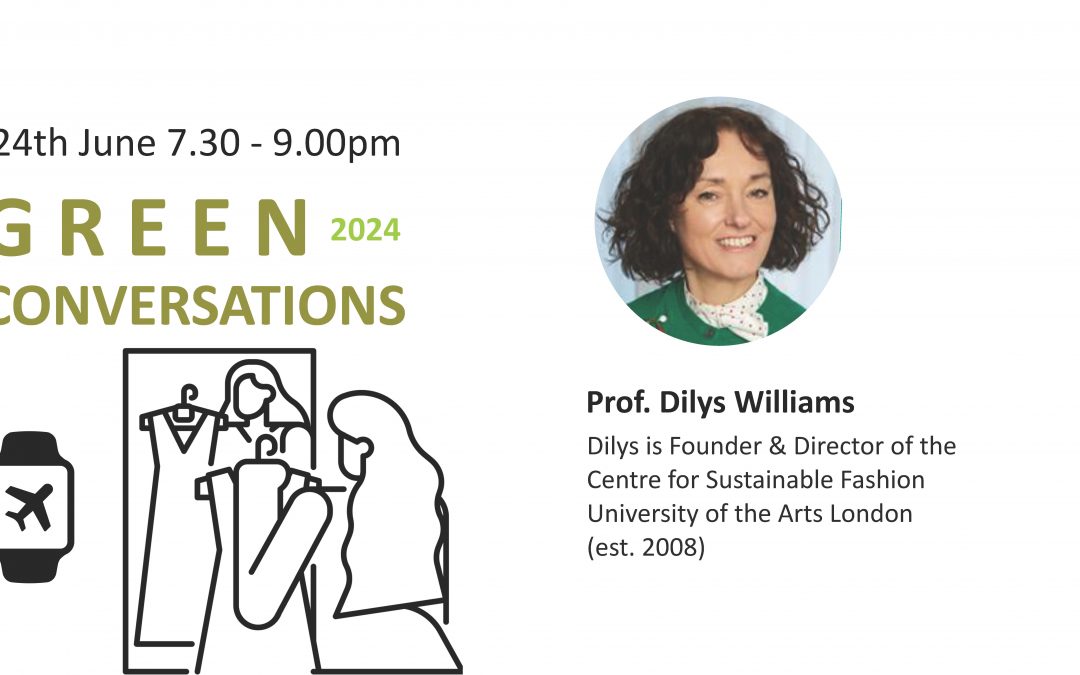Professor Dilys Williams FRSA is an experienced fashion designer, who founded the Centre for Sustainable Fashion at the University of the Arts London is 2008.
“I love the material elements of fashion, I love the sketching, making clothes, thinking about what someone’s going to wear.
“Fashion is a decision on how we want to represent ourselves in the world every single day, it is something that is intrinsic to being human.”
As a $3 trillion commercial venture, the fashion industry spans the world and involves millions of people.
“Fashion is both personally important and important to the community. It exists on the high street and in stores, but it is also very deep in our cultures.”
The Centre for Sustainable Fashion (CSF) was founded in 2008 as a collaboration between professors, students, and designers at the University of the Arts London.
The CSF brings a bold vision for making explorations around what it means to live well together in a more than human way, through fashion as our sense of self.
The Centre’s aims are to examine people’s relationships as mediated through fashion’s material and cultural elements, alongside its economic power that involves the livelihoods of people all over the world.

“I realised there was nothing being taught in the curriculum around the ecological and social elements of what it meant to be a designer.”
The reality of fashion is that it is highly extractive and exploitative, and a lot of the ways fashion is talked about is as an average of the whole. This can spark discussion, but from a designer’s perspective, the discourse is often not recognisable in terms of professional practice.
“There’s a lot of tacit knowledge in the industry, but not many publications around the power dynamics, social and environmental dynamics of being a fashion designer.”
“This means that there are lots of people in different positions in the industry, who don’t really have the opportunity to question and think about what they’re doing.”
Dilys explains that this results in a lot of finger pointing along the supply chain, with people saying a problem exists in a different place, and that is where the change needs to take place, without recognising what they can do to improve the situation.
Since its inception, the CSF has worked with designers in big businesses across the world, showing that there is a desire for people in the industry to do things that make themselves feel proud about working in the sector.
In one of its earliest projects, the CSF brought together every editor of Vogue Magazine into one room to come up with a glossary of fashion terms to make sure that words that describe the industry and its practices were clear and precise to combat misinformation and greenwashing
“We are fully aware there’s a lot of rubbish being talked about sustainability, and some terminology is co-opted and used incorrectly.”
“I wanted to change things from within with the Centre, to change how and why I would teach fashion, how we teach, who we teach it with and what purpose.”
Other projects CSF has undertaken, include creating a framework for small businesses in London that helps them take environmental, social, cultural and economic dimensions into account as part their work.

Graph showing the carbon footprint per person in the G20 countries from fashion activities. The dotted line represents the safe space from a carbon perspective, once its crossed it becomes unsustainable. (1.5 degrees warming) – The graphic also shows inequality. 80 per cent of carbon comes from top 20 per cent of earners who buy the cheapest fashion. The myth that cheap fashion is there for people who can’t afford anything another than a low price, is completely debunked.
Green Conversations is a free initiative launched by the St John’s Society that brings together voices from across the environment and conservation movements to discuss the issues that matter most to local communities and wider world.
Watch and Listen to Dilys’ full talk at Green Conversations hosted by the St John’s Society.
Download the slides from the presentation in PDF format.
Huge thanks to:
Professor Dilys Williams FRSA
John Cowley for writing the above blog.
Alex Forsey for filming and editing the event video.

